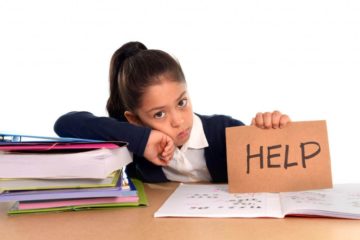The brain is the main beneficiary of any kind of aerobic activity. There is a strong brain-body connection. Hence, it is important to remember that learning doesn’t happen from the neck up, but from the feet up! (Michael Kuczala, TEDxAshburn).

Movement helps the brain in a variety of ways:
- It prepares the brain for learning since physical movement helps the brain reorganize itself.
- More neural pathways get created and interconnected in the brain.
- It increases oxygen to the brain cells and triggers the release of brain-derived neurotrophic factor called BDNF, which improves cognition and boosts communication between neurons.
- Physical activity releases endorphins, dopamine, norepinephrine and serotonin – all of which help us regulate our mood.
- When movement is incorporated through the day as “brain breaks”, it makes the learner more effective.
- Since movement enhances brain functioning, research has shown that children who are more physically fit tens to do better academically, with fewer discipline issues.
- It improves memory, language, attention, emotional regulation and decision making.
- When language is combined with movement, studies have shown that learning improves by 90%.
- Movement also creates better self-awareness and better awareness of others.
In classrooms, when movement breaks or brain breaks or team building activities are done, the relationship between students and with the teacher gets better. Students start to feel ‘safe’, the environment becomes one for achieving ‘success’, motivation starts to increase, teamwork gets built, communication gets better starts, which in turn improves the academic performance.
When students are also given a choice to answer questions using movement, it provides brain breaks during the lecture without actually taking a break. It also helps them to be engaged in the lesson. An example would be the teacher giving a multiple choice question, and the students having to answer “A” by waving their hands, “B” by marching in place, “C” by placing their hand to the opposite knee, etc.
 Another way to incorporate movement into the school classrooms or home classes would be to teach content using movement – doing and feeling always betters the learning process. An example of this would be to form letters with their bodies, spell out words using a variety of movements, walk in a circle and across the circle to learn about diameter and circumference, etc. There are so many ways of learning concepts without making it boring!
Another way to incorporate movement into the school classrooms or home classes would be to teach content using movement – doing and feeling always betters the learning process. An example of this would be to form letters with their bodies, spell out words using a variety of movements, walk in a circle and across the circle to learn about diameter and circumference, etc. There are so many ways of learning concepts without making it boring!
Most children build the foundations of movement by moving their body in multiple planes (transverse, frontal and saggital, as shown in the picture below).

However, children with neurodevelopmental disorders have difficulty, moving their body across these different planes. Difficulty in crossing their midline or very limited trunk rotation are examples of effects of such difficulties. These difficulties show up in speech also as speech is movement! Those with speech difficulties would most probably have difficulties in their body movements too as the oral structures reflect the capabilities of the whole body. The more stability in the body, the more mobility in the mouth.
The picture below has been shared by us multiple times – but we are including it here to help you see the whole picture again. This is a simplistic view of what happens in the brain when any kind of movement needs to be executed. This visual can also be used to help professionals and parents understand what is NOT happening in children with movement difficulties like Dyspraxia/Developmental Coordination Disorder (DCD) or Childhood Apraxia of Speech/Developmental Verbal Dyspraxia.

If movement is so important to development, why is it we do not incorporate enough of it into our children’s lives? Why do we expect them to sit for 45 minutes or an hour continuously to learn? This could be happening in the regular classrooms, special school classrooms, therapy sessions or at home. Isn’t it time to change things up and incorporate a better and more effective way of learning? Lets change the norm…
Here are a few more blogs that might be of interest to you:
- Dyspraxia: https://www.playstreet.in/2021/09/10/what-is-dyspraxia/
- Primitive Reflex Integration: https://www.playstreet.in/2020/09/23/primitive-reflex-integration/
- Importance of core muscles for children: https://www.playstreet.in/2020/07/28/importance-of-core-muscles-for-children/
- Movement Based Interventions: https://www.playstreet.in/2020/07/22/movement-based-interventions/
- Childhood Apraxia of Speech: https://www.playstreet.in/2017/09/24/childhood-apraxia-of-speech-what-is-it-how-does-it-affect-a-child/
- Why do children need music and rhythm in their lives? https://www.playstreet.in/2021/10/21/why-do-children-need-music-and-rhythm-in-their-lives/



1 Comment
Jones Christina · August 27, 2024 at 2:30 pm
Great insights on the role of movement in child development! Coordination learning for kindergarteners seems to be an area that’s often overlooked. I appreciate the practical advice here; it’s inspiring me to introduce more movement-based games into my child’s routine. Read more about coordination learning for kindergarten here https://www.dotlearningcircle.com/the-dot-movement-and-cordination-program-for-pre-primary-children